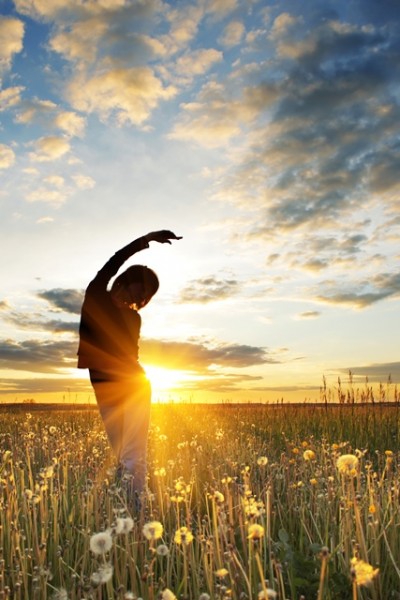The summer solstice occurs this year on 21 June, when the sun is at its highest point in the Northern Hemisphere sky. This Midsummer’s day has the longest period of sunlight and is also the longest day of the year.
The word ‘solstice’ comes from the Latin ‘solstitium’ (or ‘sol’ meaning sun) and ‘stitium’ (meaning stop) and translates as ‘stopping or standing still’. The solstice symbolises the gradual shift of the sun that occurs on this day in June.
What is a ‘solstice’?
A solstice is an astronomical event that is caused by Earth, as it tilts on its axis and orbits around the sun. The Earth does not orbit in an upright position, and therefore tilts on its axis so that the sun’s warmth and light are received directly. During the summer solstice the Earth is positioned so that the North Pole leans towards the sun.
Locations around the world that are positioned north of the equator have days that have longer than 12 hours of daylight, during the June solstice. All locations south of the equator therefore have the opposite, and have days that have shorter than 12 hours of daylight.
What happens on the summer solstice?
Because Midsummer’s day is the longest day of the year we get an estimated 16 hours and 38 minutes of daylight on this day. This means that you have a bit more time to enjoy the sun, however you choose to mark the annual astronomical calendar occasion.
Why is this day traditionally celebrated?
The summer solstice is traditionally celebrated by Celts, pagans and druids, who believe in and wish to honour the power of the sun. The lighting of a bonfire during the annual celebration is considered to be a symbolic way to give back energy to the sun.
Today the solstice is mostly celebrated because it simply signifies the end of the cold and dark winter and the beginning of the warm, light and brighter months.
How is the solstice celebrated?
Midsummer’s Day marks the first day of summer in the Northern Hemisphere. This means that thousands of people will flock to UK beaches to enjoy the longest day of the year. Many thousands of people, who prefer to celebrate with more meaning, opt for a trip to Stonehenge, in Wiltshire. This is where they will enjoy the beauty of watching the sun rise, as a backdrop to the 5,000-year-old famous solar monument.
The interpretation of the tradition varies among most cultures and celebrations sometimes also include symbols of fertility and religious themes.
Why isn’t Midsummer’s Day the hottest day of the year?
Although there are more hours of daylight to enjoy on the summer solstice the warmest seasonal weather doesn’t occur until summer gets into full swing. This is officially known as ‘the lag of the seasons’, which basically means that summer needs sufficient time to get going. The hottest day of the year is therefore usually in August, once the ocean has fully absorbed the warming rays of the summer sun.


